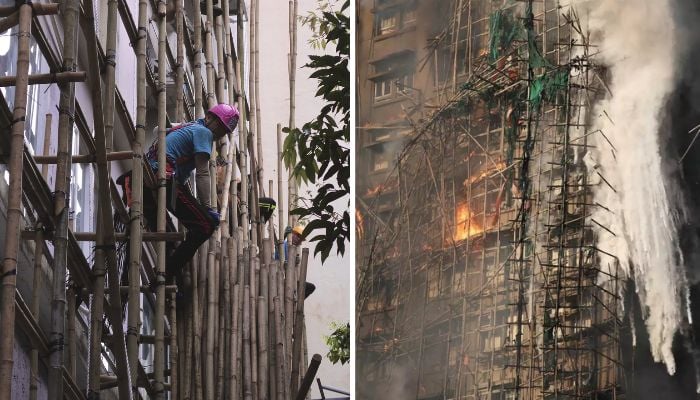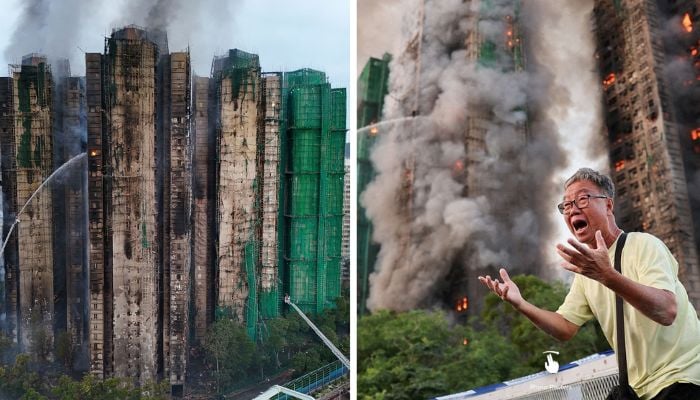Bamboo scaffolding under scrutiny after Hong Kong's deadliest fire in century kills 55
Authorities have taken three renovation workers in custody
November 27, 2025

Hong Kong’s deadliest fire of the century has put the centuries old technique of construction, bamboo scaffolding, under scrutiny.
The ancient bamboo structure dating back to the Han dynasty, around 2,000 years ago, is still widely used in Hong Kong for construction and renovation due to low-cost, flexibility and sustainability.
In this technique, bamboo poles are tied together to create a framework for workers to access different heights for construction, renovation, or cultural event projects.
This structure has been used to construct some of the tallest buildings and sky scrapers in the city including Norman Foster’s HSBC headquarters.
Though, the exact cause of the blaze that left 55 dead is not known yet. However, authorities have taken three renovation workers in custody over gross negligence.
Early reports suggest that fire started in one of the bamboo scaffoldings around the towers in Tai Po district.

Since bamboo is highly flammable, once ignited, the fire spread super-fast, engulfing several buildings.
Such an incident has been very rare in the city amid the large-scale construction works being carried out.
However, the government has decided to run an inspection check on all the bamboo scaffoldings in the city as a precautionary measure.
Hong Kong’s Labour Department revealed that 24 deaths were reported related to these scaffoldings between January 2018 and August 2025.
Earlier this year, the city administration ruled that 50 per cent of the new public buildings would be constructed using metal scaffoldings for better protection of workers.









